A 4Gallon Air Compressor is a versatile tool that can power a wide range of pneumatic tools. Ideal for both home and professional use, it can be used for inflating tires, running nail guns, powering paint sprayers, and even operating air drills. It’s compact size adds to its utility, making it relatively portable and easy to store.
With a capacity of 4 gallons, it offers sufficient air volume for most small to medium-sized tasks, reducing the downtime between refills. Regular maintenance and proper operation can extend the lifespan of this equipment, making it a worthwhile investment.

- 4 Gallon Air Compressor – Good For Air Tools?
- Can a 4 Gallon Air Compressor run a Nail Gun?
- Can a 4 Gallon Air Compressor Run An Impact Wrench?
- Can a 4 Gallon Air Compressor Run A Framing Nailer?
- Is a 4 Gallon Air Compressor Good For Tires?
- Can You Paint With a 4 Gallon Air Compressor?
- Can You Use a 4 Gallon Air Compressor To Paint A Car?
- Will a 4 Gallon Air Compressor Run A Paint Sprayer?
- How Many PSI is a 4 Gallon Air Compressor?
- How Much Does A 4 Gallon Air Compressor Weigh?
- How Long Do 4 Gallon Air Compressors Last?
- Should I Buy 4 Gallon Air Compressor?
- How To Use a 4 Gallon Air Compressor?
- Maintenance Tips For 4 Gallon Air Compressor:
- Frequently Asked Questions
- Final Words:
4 Gallon Air Compressor – Good For Air Tools?
A 4-gallon tank size can indeed be suitable for air tools, depending on the type of tools and the tasks at hand. Air tools each have their own CFM (Cubic Feet per Minute) requirements, which refers to the amount of air that a tool needs to operate.
A 4-gallon compressor generally has a lower CFM, which makes it a good match for light-duty air tools such as brad nailers, staple guns, or inflation tools.
However, for heavy-duty tools or tasks that require continuous air supply—like sanders or spray painters—a larger compressor with a higher CFM may be more appropriate. Always check the CFM requirements of your tools and ensure they match with the capacity of your compressor for optimal performance.
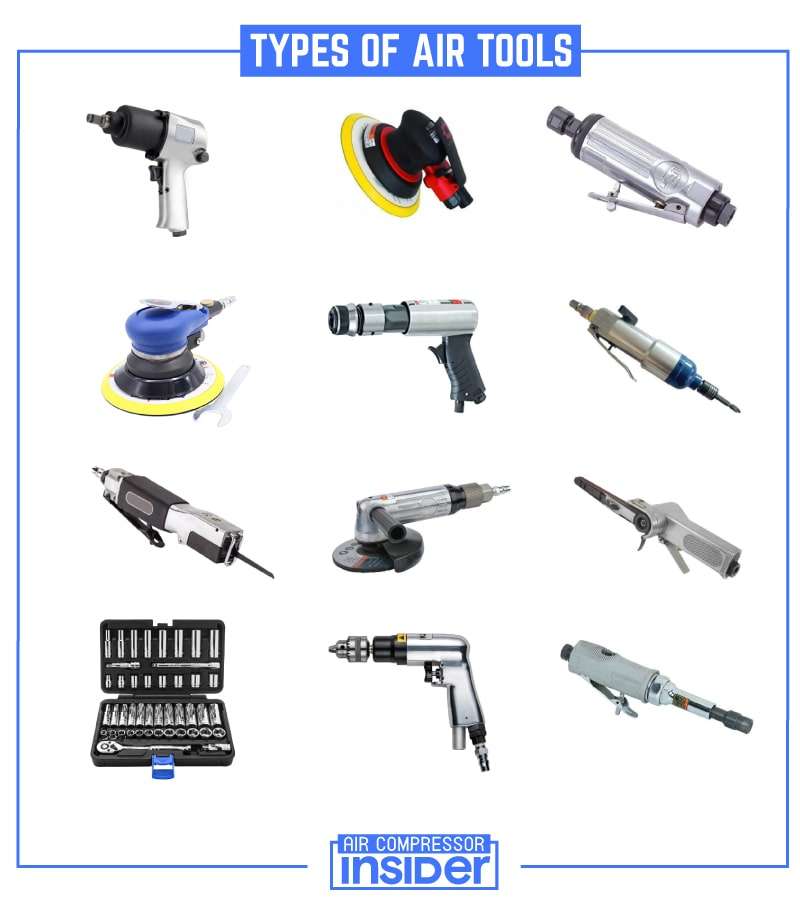
Can a 4 Gallon Air Compressor run a Nail Gun?

Yes, a 4-gallon air compressor can indeed run a nail gun, but it is important to consider the specific requirements of the nail gun and the capacity of the compressor. Typically, a nail gun requires an air compressor that can deliver at least 2 to 5 cubic feet per minute (CFM) at 70 to 90 pounds per square inch (PSI). A 4-gallon air compressor usually can generate enough power to operate a nail gun effectively for short periods.
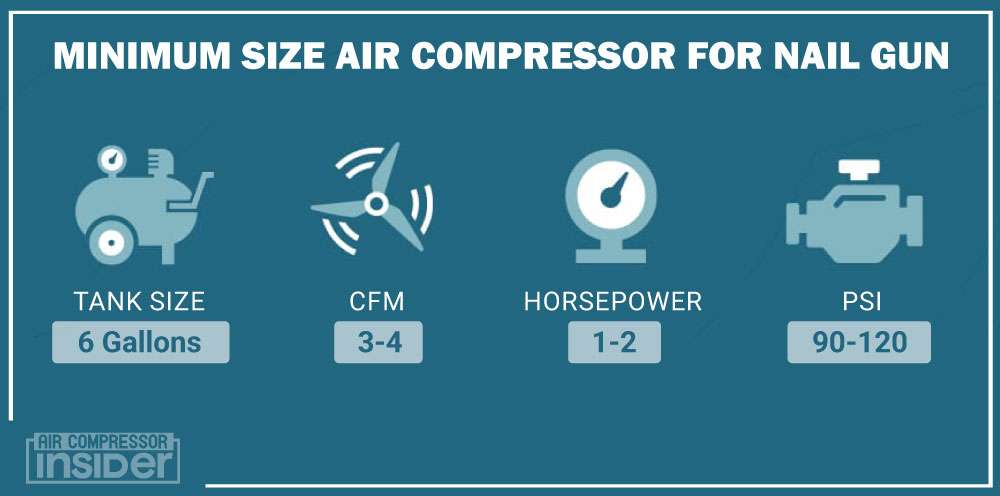
However, for prolonged or heavy-duty use, a larger compressor may be more suitable. Remember that the performance of the compressor can vary based on the model and manufacturer. Hence, always check the manufacturer’s guidelines before using a nail gun with a 4-gallon air compressor.
Can a 4 Gallon Air Compressor Run An Impact Wrench?
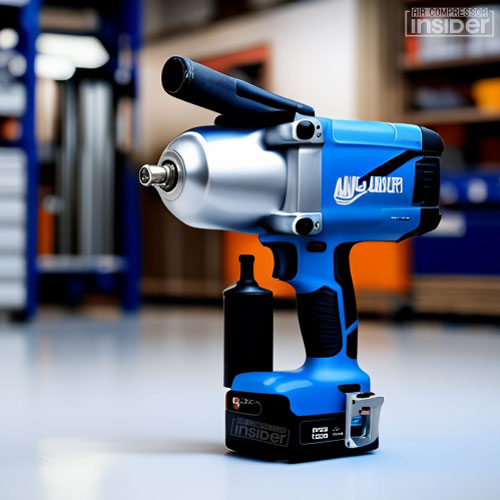
A 4-gallon air compressor can theoretically run an impact wrench, but it ultimately depends on the specific requirements of the tool and the duty cycle of the compressor. Typically, impact wrenches require a substantial amount of air volume, usually measured in Cubic Feet per Minute (CFM). If the air compressor can’t supply the necessary CFM, it may result in decreased performance or even damage to the tool over time.
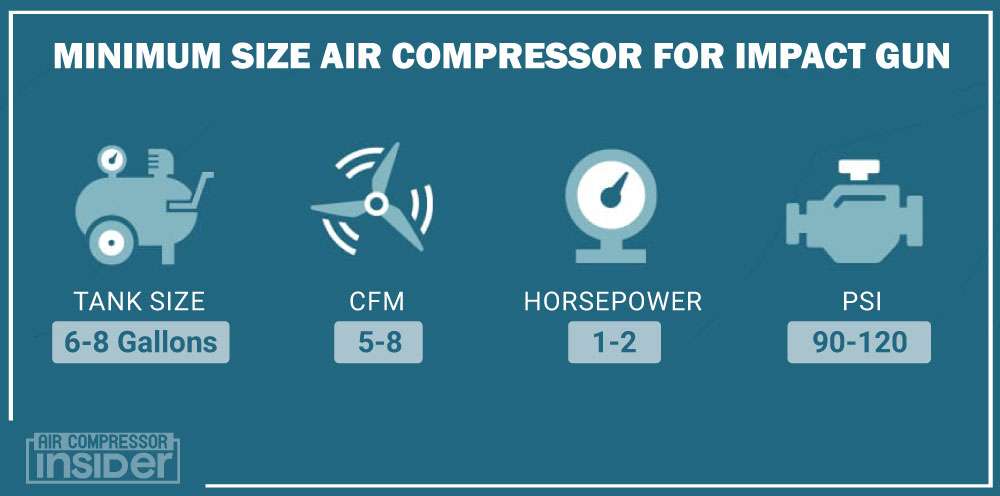
Therefore, while a 4-gallon air compressor can be used for intermittent or light-duty work, for consistent, heavy-duty use, a higher capacity air compressor would be more suitable.
Can a 4 Gallon Air Compressor Run A Framing Nailer?

Yes, a 4-gallon air compressor can indeed run a framing nailer. However, it’s crucial to note that the efficiency of operation heavily depends on the nailer’s CFM (Cubic Feet per Minute) rating, which indicates the volume of air a tool requires to operate optimally. Most framing nailers have a CFM rating of 2.2 to 2.5, making a 4-gallon air compressor sufficient for short, intermittent usage.
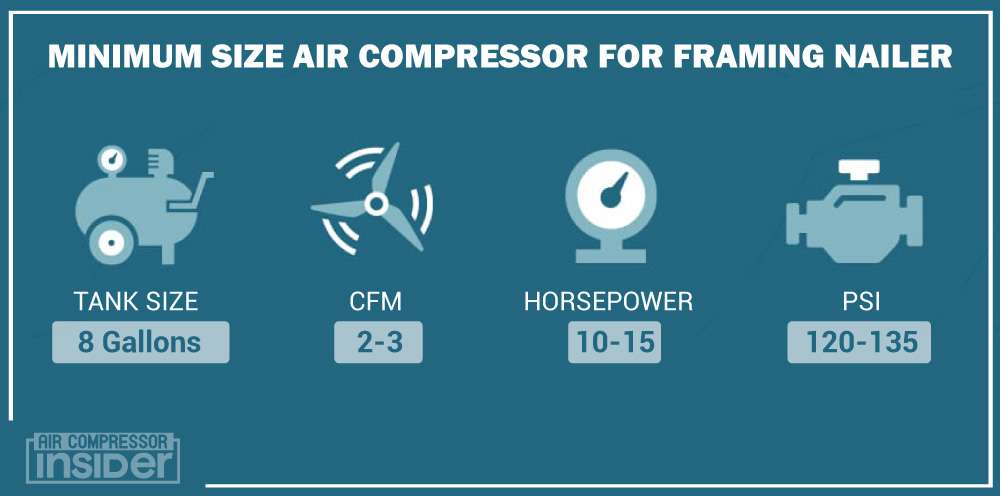
For continuous, heavy-duty tasks, you may need a compressor with a larger tank capacity to ensure a steady supply of compressed air. Always ensure to check the tool’s CFM requirement and match it with the compressor’s CFM offering at the corresponding PSI (Pounds per Square Inch) level.
Is a 4 Gallon Air Compressor Good For Tires?

A 4-gallon air compressor can be suitable for inflating tires, but its effectiveness largely depends on the specific needs and circumstances. For standard passenger cars and bicycles, a 4-gallon air compressor should be more than sufficient, having enough capacity to inflate tires efficiently. However, for larger vehicles such as trucks or RVs with higher PSI requirements, you might need an air compressor with a larger tank or a higher CFM rating to ensure the task is accomplished efficiently.
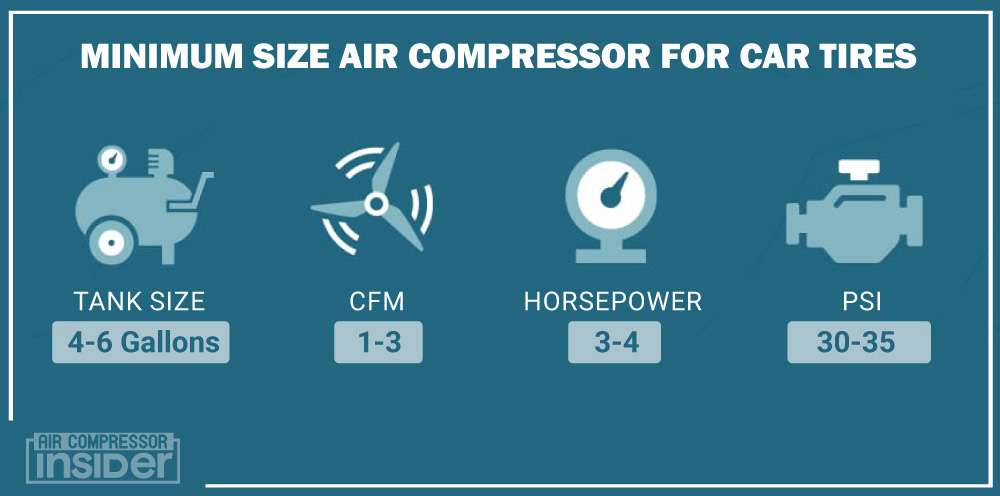
Additionally, if inflating tires is a regular task or you’re managing multiple vehicles, a larger compressor would be more suitable to handle the demand without frequent stops and starts. Always remember to check the PSI requirements of your tires before choosing an air compressor.
Can You Paint With a 4 Gallon Air Compressor?
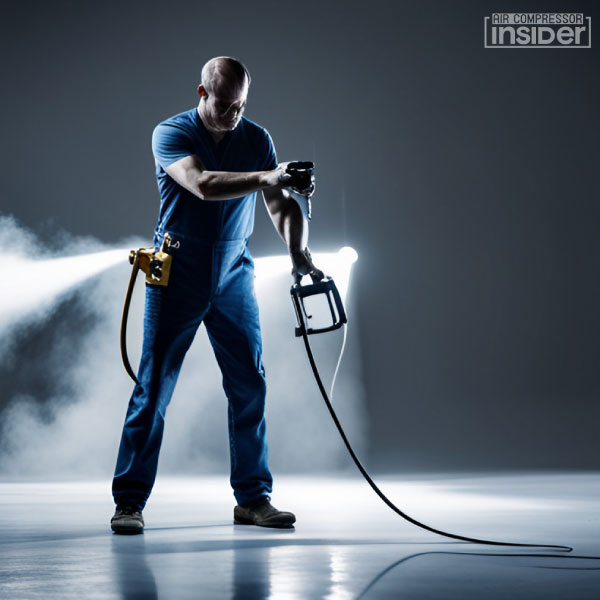
Yes, you can paint with a 4-gallon air compressor. However, it’s important to bear in mind the job size and the type of paint sprayer you are using. A 4-gallon air compressor can handle small to medium painting tasks efficiently.
For larger jobs, like painting a car, it could potentially require frequent breaks to rebuild pressure, making the process more time-consuming. The key lies in ensuring the air compressor can deliver the adequate Cubic Feet per Minute (CFM) required by the paint sprayer for a smooth and uninterrupted operation.
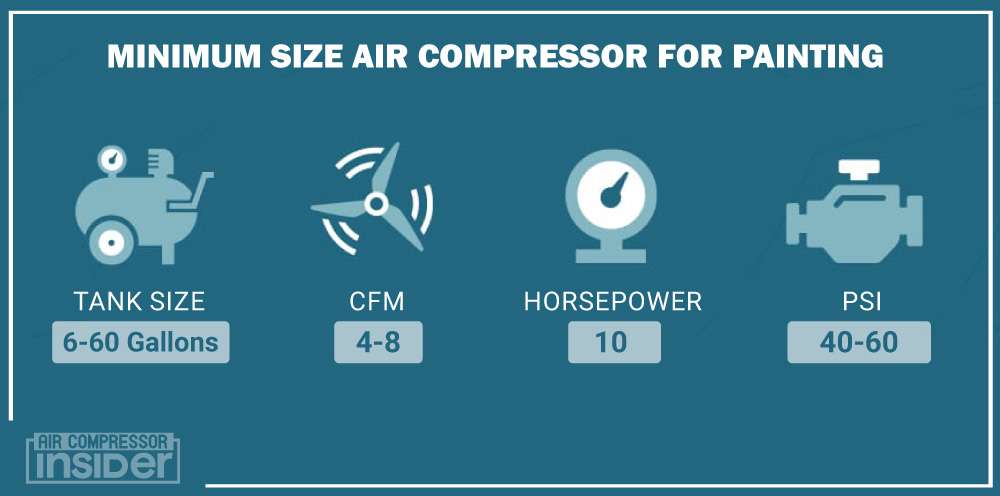
Can You Use a 4 Gallon Air Compressor To Paint A Car?

Technically, yes, you can use a 4-gallon air compressor to paint a car. However, it may not be the most efficient choice for such a large job.
Painting a car requires a consistent and sizable volume of air, and a 4-gallon compressor might struggle to keep up with the demand. It will likely need frequent breaks to recharge, extending the painting process’s duration.
Furthermore, the quality of the paint job might suffer if the compressor can’t maintain the necessary pressure consistently. Thus, while it’s possible to use a 4-gallon compressor for this task, a larger capacity compressor is generally recommended for painting vehicles.
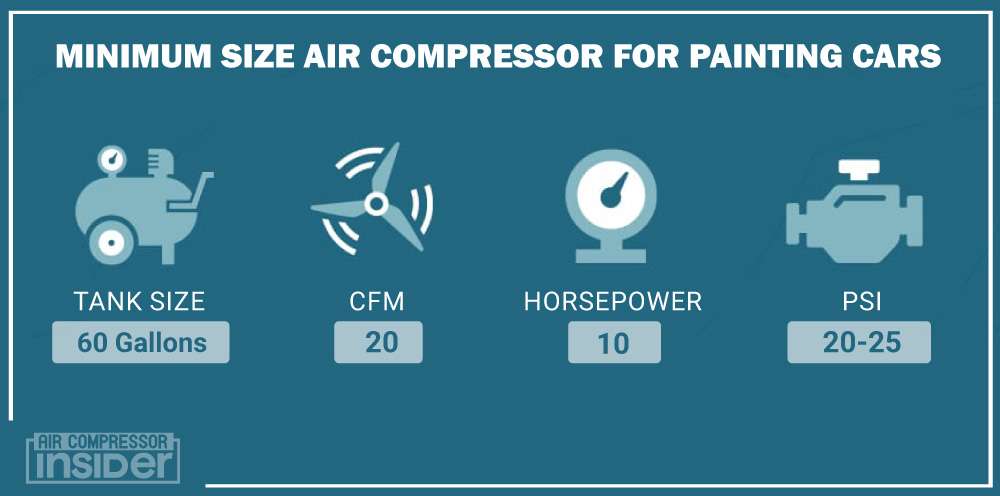
Will a 4 Gallon Air Compressor Run A Paint Sprayer?

Yes, a 4-gallon air compressor can run a paint sprayer, but its effectiveness will largely depend on the specific requirements of the paint sprayer. Most lower to mid-range paint sprayers require between 3 and 8 cubic feet per minute (CFM) at 40 to 45 psi, which a 4-gallon compressor can typically provide.

However, it might struggle to maintain the required air pressure over extended periods. Thus, a 4-gallon air compressor can be suitable for smaller painting tasks, but for larger projects or commercial-grade paint sprayers that require higher CFM and PSI, a more robust air compressor would be recommended.
How Many PSI is a 4 Gallon Air Compressor?
The PSI, or Pounds Per Square Inch, of a 4-gallon air compressor can vary depending on the specific model and manufacturer. However, most 4-gallon air compressors on the market have a maximum pressure rating ranging from 125 to 150 PSI.
It’s crucial to check the specifications of your particular compressor to ensure it meets your needs. Remember, the PSI rating is an important factor in determining what tasks your air compressor can handle effectively.
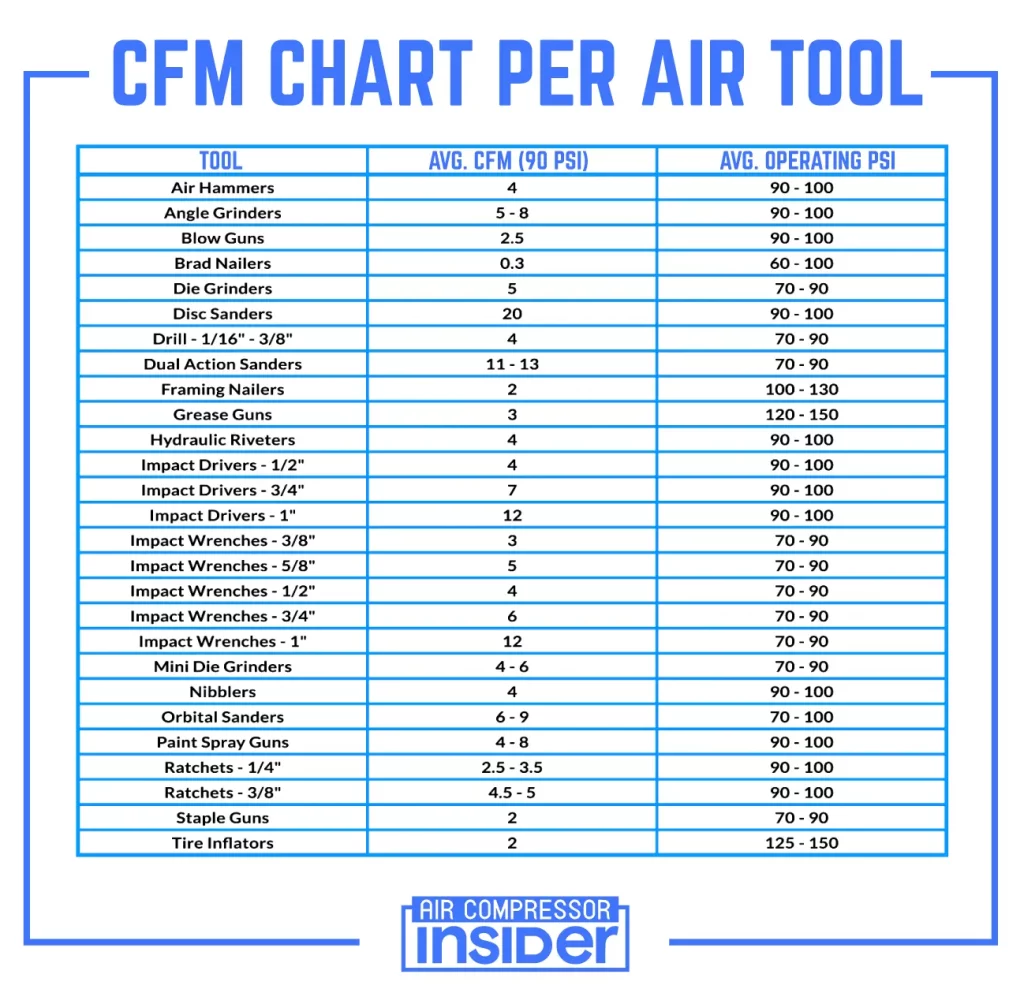
How Much Does A 4 Gallon Air Compressor Weigh?
The weight of a 4-gallon air compressor can vary greatly depending on its design, materials, and additional features. On average, a 4-gallon air compressor tends to weigh anywhere between 30 to 70 pounds.
Lightweight models are typically designed for portability and ease of use, while heavier models may include additional features such as dual tanks or a more robust motor. Always refer to the manufacturer’s specifications to find the exact weight of a specific model.
How Long Do 4 Gallon Air Compressors Last?
The longevity of a 4-gallon air compressor can vary greatly depending on factors such as the frequency of use, the duration of operation at a time, type of operations it’s used for, the quality of the air compressor, and how well it is maintained.
High-quality air compressors from reputable manufacturers, used moderately and maintained well, can last for several years. It’s not uncommon for such air compressors to last 10-15 years or even longer. However, cheaper models or those that are overworked or poorly maintained may fail sooner, often within a few years.
Regular maintenance, including oil changes (for oil-lubricated models), filter changes, and promptly addressing any operational issues, can significantly extend the life of a 4-gallon air compressor.
Should I Buy 4 Gallon Air Compressor?
Yes, 4-gallon air compressors can certainly be worth the investment. Their compact size makes them highly portable and suitable for a range of small to medium-sized tasks, including inflating tires, powering nail guns, and even certain paint jobs. They’re a great option for home DIY enthusiasts or professionals who need a lighter, more maneuverable compressor for on-the-go jobs.
Additionally, most 4-gallon compressors are reasonably priced and require less maintenance than their larger counterparts, making them a cost-effective choice for many. However, they may not be the perfect fit for everyone, especially for those working on larger projects or requiring continuous high-pressure output.
Therefore, it’s crucial to consider your specific requirements before deciding if a 4-gallon air compressor is the right choice for you.
How To Use a 4 Gallon Air Compressor?
Using a 4-gallon air compressor is generally straightforward and user-friendly. Below is a step-by-step guide:
1.Check the Oil Level:
If your air compressor is an oil-lubricated model, ensure the oil level is appropriate before running it. Typically, there’s an oil level window for this purpose.
2. Connect the Hose:
Attach the air hose to the compressor’s air outlet. Ensure the connection is secure to prevent any air leakage.
3. Connect the Tool:
At the other end of the hose, connect the air tool you intend to use. This could be a paint sprayer, nail gun, or tire inflator, depending on your task.
4. Set the Pressure:
Adjust the output pressure according to the requirements of your tool. This is typically done using a pressure regulator knob on the compressor. Do not exceed the maximum pressure rating of your tool.
5. Power One:
Once everything is set up correctly, turn on the compressor. It will start to fill the tank with air until it reaches the set pressure.
6. Use Your Tool:
You can now begin to use your tool. Monitor the pressure gauge and allow the compressor to recharge as needed.
Remember to always follow the manufacturer’s guidelines for your specific compressor and tool.
Maintenance Tips For 4 Gallon Air Compressor:
Regular maintenance of your 4-gallon air compressor can significantly extend its lifespan and ensure consistent performance. Here are some useful maintenance tips:
1. Regular Inspection:
Regularly check all components, including the air filter, hose, and connections, for any signs of wear and tear or damage. Replace any worn out parts promptly to prevent further damage or decreased performance.
2. Clean Air Filter:
The air filter prevents dust and debris from entering the compressor. If it becomes clogged, the efficiency of the compressor can be reduced. Cleaning or replacing the air filter regularly can improve performance and prevent damage.
3. Oiling:
Some air compressors require oil for their operation. If yours is one, make sure to check the oil level regularly and top it up when needed. Use only the oil recommended by the manufacturer.
4. Drain the Tank:
Moisture tends to accumulate in the compressor tank, which can lead to rusting over time. Make sure to drain the tank after each use to prevent moisture build-up.
5. Lubricate:
If your compressor is an oil-lubricated model, ensure it is adequately lubricated. Check the oil level regularly, and top up or change the oil as per the manufacturer’s recommendation.
5. Store Correctly:
Keep your compressor in a clean, dry area. Avoid storing it in places with high moisture or dust levels, as these can damage the compressor over time.
5. Check the Safety Valve:
The safety valve is a crucial component that prevents pressure build-up. Regularly test the valve to make sure it is working correctly.
Remember; always follow the specific maintenance guidelines provided by the manufacturer for troubleshooting your air compressor.
Frequently Asked Questions
Question #1
What makes a 4-gallon air compressor portable?
A 4-gallon air compressor is considered portable due to its compact size and lighter weight compared to larger models. They are typically designed with handles or wheels for easy transport.
Question #2
Can I use a 4-gallon air compressor for painting?
Yes, a 4-gallon air compressor can be used for smaller paint jobs. However, for larger tasks or continuous use, a larger capacity compressor might be more suitable.
Question #3
Is a 4-gallon air compressor suitable for inflating car tires?
Absolutely. A 4-gallon air compressor is more than capable of inflating car tires. It’s a handy tool for maintaining optimal tire pressure.
Question #4
Do all 4-gallon air compressors require oil?
Not all. There are oil-lubricated models and oil-free models. Oil-free models require less maintenance but may not last as long as their oil-lubricated counterparts.
Question #5
How often should I drain the tank of my 4-gallon air compressor?
It’s recommended to drain the tank after each use to prevent moisture build-up, which can lead to rusting over time.
Question #6
How should I maintain the air filter of my 4-gallon air compressor?
Regularly check the air filter for any signs of clogging or damage. Clean or replace the filter as needed to ensure efficient operation.
Question #7
Can I use a 4-gallon air compressor for sandblasting?
A 4-gallon compressor may not be suitable for such an intensive task. Sandblasting generally requires a high-volume air supply, which larger air compressors are more equipped to provide.
Question #8
What tools can be effectively powered by a 4-gallon air compressor?
Tools such as nail guns, staple guns, small paint sprayers, and tire inflators can be effectively powered by a 4-gallon air compressor.
Question #9
How can I ensure the safety of using my 4-gallon air compressor?
Always follow the manufacturer’s safety guidelines, regularly inspect your equipment for any signs of damage, and never exceed the recommended pressure limits.
Question #10
How do I choose the right 4-gallon air compressor?
Consider factors such as your specific needs, the tasks you plan to use it for, its weight and portability, and your budget. It’s also beneficial to read product reviews and manufacturer’s specifications.
Final Words:
Opting for a 4-gallon air compressor can be a prudent choice, especially for smaller tasks and in instances where portability is a key consideration. This guide provides a comprehensive understanding of how to operate and maintain a 4-gallon air compressor, harnessing its full potential while ensuring its longevity. It is crucial, however, to abide by the manufacturer’s guidelines and prioritize safety in all operations.
Remember, the right air compressor for you ultimately depends on the specific requirements of your tasks, your budget, and personal preference. With careful thought and consideration, your 4-gallon air compressor will be a reliable and efficient tool in your kit.
